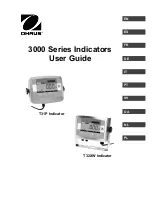
6
INSTALLATION AND OPERATION MANUAL CRYSTALLINE SOLAR MODULES Q-CELLS SE - AUSTRALIA
• AS 4777.1 “Grid connection of energy systems via inverters - Installations requirements”
• AS/NZS 1170 “Structural design actions Set”
• AS/NZS 1768 “Lighting protection”
• AS/NZS 3000 “Electric installations”
• AS/NZS 3100 “Approval and test specifications - General requirements for electrical
equipment”
• AS/NZS 5033 “Installation of photovoltaic (PV) arrays”
• Clean Energy Council Grid-Connect Install & Supervise Guidelines
• Clean Energy Council Grid-Connect Design Guidelines
• Regional wiring and installation codes
Always install the solar modules in accordance with all legal codes and standards.
• The modules are certified according to the norm IEC 61215 for safe operation in moderate
climates.
• The permitted module temperatures lie between -40 °C and +85 °C. Please ensure that
adequate ventilation exists below the module so that elevated module temperatures can
be avoided.
• Observe the requirements for a functional grounding depending on the installation location
(see Chapter 5.4 „Grounding“).
• Do not expose the modules to chemicals.
• Do not place the modules in standing water. The junction box is splash-proof only.
• Do not install the modules near highly flammable gases and vapors (e.g. gas containers) or
near open flame and flammable materials. Solar modules are not explosion-proof operating
equipment.
• The modules are not suitable for mobile usage or for indoor installations.
Optimal solar irradiation results in a maximum energy yield. For this reason, set up the mod-
ules so that they are facing the sun.
Avoid shading of the modules, as this has a negative impact on the energy yield. A module
is considered shade-free when it is entirely unshaded throughout the year (e.g. by buildings,
chimneys, trees). Even partial shading of the modules (e.g. by overhead lines, dirt, snow)
should be avoided (see also Chapter 7 “Cleaning and maintenance”).
Also, refer to the specifications for module orientation and tilt angle (see Chapter 5.1).
3.2 APPLICABLE AUSTRALIAN CODES AND STANDARDS
INSTALLATION
LOCATION
AVOIDANCE OF
SHADING
4 AREA OF USAGE AND INSTALLATION LOCATION
MODULE
































